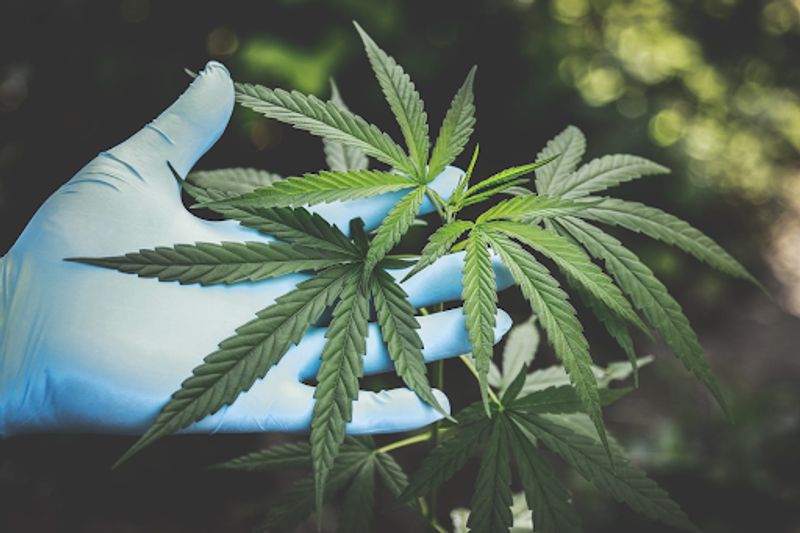COVID is the latest addition in the list of conditions cannabidiol purportedly treats. The compound has been found to stop infected cells from reproducing any more of the virus, according to one study published in the scientific journal, Science Advances.
But you won’t be seeing the World Health Organisation making a statement about the findings just yet. Like many studies that link CBD to other diseases, cannabidiol demonstrated its ability to neutralise COVID in a test tube. Numerous studies need to be done before the results at one lab turn into physicians prescribing CBD oil for COVID. That’ll likely take years.
The findings highlight one of the few certain things we know about CBD: that there’s a lot we don’t know about it. To look at what science is currently saying about the therapeutic properties of the compound, we’ll look at one area where CBD has been under the microscope for years: pain relief.
Do People Think It Works?
CBD’s reputation may shift rapidly depending on where you’re looking, but pain relief is still largely the most common reason people take it. Its non-psychoactive and non-addicting qualities make it a primary choice for people looking for an alternative to opioids and medication.
Arthritis patients use CBD to treat symptoms, despite a lack of solid, conclusive evidence. “Even though there isn’t clinical trial literature for most common uses of CBD, people don’t necessarily follow what clinical trials say,” says Kevin Boehnke from the Michigan Medicine Chronic Pain and Fatigue Research Centre.
Others use it for muscle and nerve related pain. Of the Britons who have tried CBD, 71 percent took it for pain relief, believing in the compound even though research has only really begun to ramp up following the wave of legalisation in major markets.
In the US, the National Football League seems to believe there’s more to CBD than just placebo effects. The group has made a formal request for more information and research into the compound’s use in pain management.
But What Does The Science Say?
Belief in CBD’s pain regulating effects is not completely unfounded. In fact, that eager belief may be part of the reason people find it effective.
Researchers from Syracuse University have found that CBD’s pain soothing property is half pharmacological, and half believing it works. “We found improvements in pain measures caused by the pharmacological effects of CBD and the psychological effects of just expecting that they had gotten CBD,” says Martin De Vita, one of the researchers in the study.
But even then, exactly how expectations of relief and the cannabinoid work together to reduce pain is complex. “We found that sometimes pharmacological effects of CBD brought down some of those, but the expectancies did not. Sometimes they both did it. Sometimes it was just the expectancy”, says De Vita. Findings also show that while CBD didn’t significantly reduce the magnitude of the pain, the compound made it easier to deal with.
We can also infer that CBD has some kind of effect on how our body perceives pain by looking at what it interacts with in our bodies: the endocannabinoid system (ECS). The ECS is a network of receptors and neurotransmitters that controls critical functions like sleep, mood, and pain.
While we don’t know the exact mechanisms of CBD in the ECS system, we do know that they affect the activity of the receptors. Researchers believe these interactions are probably responsible for the health benefits people experience–we just haven’t decoded exactly how yet.
CBD has also been used for treating serious medical conditions. Canada approved the use of Sativex, a THC and CBD spray, for treating neuropathic pain from multiple sclerosis in 2005, and again in 2007 for difficult-to-treat cancer pain.
What’s Keeping Us From Conclusive Data?
While most products place the cannabinoid front and centre, in the lab, it's rarely alone in a test tube. Many trials test CBD with THC or medical marijuana, making it difficult to tell what CBD can really do on its own.
Nabiximols, which is the only CBD medication pharmaceutically approved for pain relief, contains cannabidiol combined in a 1:1 ratio with THC. Jason White, the chair of the World Health Organisation’s Expert Committee on Drug Abuse, estimates that there are less than ten randomised control trials (RCTs) that use pure CBD.
Another barrier to more definite data is the lack of human trials. Whilst promising results have been found, many of CBD’s biggest pain relief claims are based on animal studies. Cannabidiol has been found to reduce pain and inflammation caused by arthritis, but in rats. Another found pain mitigation in dogs. The study from Syracuse University is the first experimental trial that looked at the link between pure CBD and pain relief in humans.
So, Should You Take CBD For Pain Relief?
There’s growing evidence that CBD does have some effect on mitigating pain. But until science catches up with conclusive data from human trials, it's best to remain picky in the products you use.
Some advise taking a conservative approach until the science is clearer. “I think the medical community is looking at this with cautious interest, still wanting to make sure people don’t forget anything strong enough to help you can also hurt you,” says Dr. Brent Bauer, director of the Mayo Clinic Complementary and Integrative Medicine Program.
Generally, it’s a good idea to be cautious of anything that tries to market CBD as a wonder drug for pain relief. Users should also be careful around dosage, as there’s currently no tested standard for treatment. Doctors recommend against relying only on CBD for pain management, but don’t prohibit people from using it. Healthcare professionals also warn against taking cannabidiol if you’re taking medication to treat health conditions.
With its natural origins and non-addictive property, CBD exhibits considerable promise as a pain relief agent. Currently, lack of data limits applications, but with increasing consumer interest and commercial viability fuelling studies we’re only set to uncover more about the link between CBD and pain relief.
Disclaimer: This article is not meant to be prescriptive--please consult your healthcare provider before taking CBD for pain relief.
